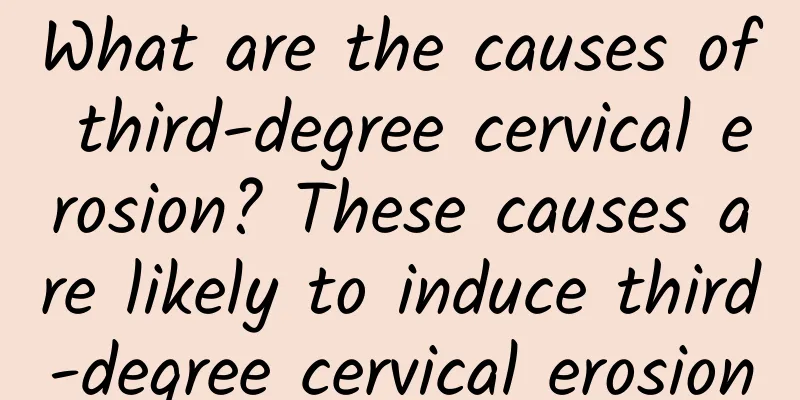The topic of low GI diet is very popular! What exactly is GI? A professor from the Department of Nutrition teaches you about the glycemic index of food

|
Changes in blood sugar levels after eating are an issue of concern to diabetic patients. Some nutritionists believe that a low GI diet can help maintain blood sugar stability. Since 2002, countries such as Australia, New Zealand and Singapore have registered low GI product labels (Low GI Symbol) for use on food packaging, hoping to increase public awareness of low GI diets. Currently, GI labels for general foods are not available in Taiwan, but it is a hot topic and even appeared in the exam questions for the university entrance academic ability test for the just-concluded 109th academic year. In this issue of ILSI Taiwan column, Professor Liu Zhenfang from the Department of Health and Nutrition at Chang Gung University of Science and Technology is invited to introduce the definition and influencing factors of GI value, as well as share research findings such as the GI value test results of common fruits in Taiwan. Carbohydrates in food: Sugars, occupy an important position in our daily diet. The more available carbohydrates the food you eat contains, the more dramatic the changes in blood sugar response after a meal. If the body is in a state of high blood sugar for a long time, it will have adverse effects on health. In the past, people paid more attention to the classification, content or intake of carbohydrates. However, in 1981, Professor Jenkins and others from the University of Toronto in Canada proposed the concept of the glycemic index (GI) of food based on the digestion and absorption of carbohydrates in the body. In recent years, many studies have shown its significance in preventing chronic metabolic diseases, especially hoping to serve as a reference for the selection of carbohydrate-containing foods. Foods with a high GI are more likely to increase blood sugar levels after a meal. The so-called GI value is defined as the ratio of the area under the curve (AUC) of blood sugar rise within 2 hours after consuming a food (food) containing 50 grams (or 25 grams) of carbohydrates to the area under the curve caused by consuming a reference food (pure glucose or white toast) under the same conditions. Therefore, the GI value is a relative value, not an absolute value. The values are arranged from 1 to 100 and are divided into three categories: low GI (≤55), medium GI (56-69) and high GI (≥70). The higher the GI value, the easier it is for blood sugar levels to rise after a meal. When discussing GI values, most people focus on foods that contain higher carbohydrates, which is more meaningful, but its value is indeed affected by the composition of the food and other factors. For example: (1) Protein and lipids in food composition. Because the starch in some foods is linked to proteins (such as pasta) or coated with lipids, it affects the rate or content of starch being broken down into glucose. Therefore, the higher the content of these two, the lower the GI value; (2) The composition, structure and content of carbohydrates will affect the GI value; (3) Food processing, preparation and cooking methods are also influencing factors. The higher the degree of processing, the higher the GI value may be. For example, the GI value of juice is higher than that of fruit. (4) The content of other ingredients, such as phytic acid and organic acids, will also affect its GI value. In addition, different growing areas, varieties, seasons, etc. will affect the GI value of food. Figure 1. Glycemic index calculation method (Provided by Professor Liu Zhenfang of the Department of Health and Nutrition at Chang Gung University of Science and Technology) The GI value of fruits is positively correlated with sugar content and total sugar content In the past few years, several research institutions in Taiwan, including the Agricultural Research Institute, Pingtung University of Science and Technology (Linetal., 2010), Zhongshan Medical University and Hongguang University of Science and Technology (Laietal., 2016), and the author's laboratory, have conducted GI value tests on rice and starchy staple foods commonly eaten by the Taiwanese people to provide a reference for the Taiwanese people when choosing staple foods. In addition, because Taiwan produces abundant fruits all year round and fruits contain a considerable amount of sugar, patients with some chronic diseases, especially those with diabetes, need to pay special attention to the selection and amount of intake. In recent years, Taiwan's native fruits have been becoming sweeter and sweeter, so in this article, the author would like to share with you the results of a study that was conducted on the GI value determination of common fruits in Taiwan. The results showed that among the 18 fruits produced or sold in Taiwan in season, those with high GI include Kyoho grapes, watermelon, pomelo and longan, those with medium GI include mango, and those with low GI include wax apple, green kiwi, lychee, golden kiwi, orange, pineapple, tangerine, banana, guava, papaya, Fuji apple, pear and cherry tomato. Table 1. Classification of GI values of common fruits in Taiwan (provided by Professor Liu Zhenfang of the Department of Health and Nutrition at Chang Gung University of Science and Technology) In addition, the sugar content of the fruit was measured using a saccharimeter and the dietary fiber content when the same 25 grams of sugar was consumed was analyzed. Among them, the top four in sugar content are grapes, bananas, golden kiwifruit, and lychees; the bottom four are Fuji apples, pears, wax apples, and cherry tomatoes. The top four fruits with the highest dietary fiber content are guava, cherry tomato, green kiwi and orange; banana, longan, grape and mango contain less dietary fiber. Further analysis revealed that the GI value of fruit was not related to the amount of glucose, fructose and sucrose it contained, but was significantly positively correlated with its sugar content and total sugar content (p<0.05), and significantly negatively correlated with dietary fiber (p<0.05). Figure 2. Glycemic index of common fruits in Taiwan (Provided by Professor Liu Zhenfang of the Department of Health and Nutrition at Chang Gung University of Science and Technology) Figure 3. Dietary fiber content of common fruits in Taiwan (Provided by Professor Liu Zhenfang of the Department of Health and Nutrition at Chang Gung University of Science and Technology) The experimental results suggest that when you intend to use the GI value as the basis for fruit selection, but cannot actually measure the GI value of each fruit, you can use a simpler and more convenient saccharimeter to test the sugar content, or use the dietary fiber content as a reference and basis for preliminary selection. The glycemic index of other common foods can be found in Table 2. Table 2. Glycemic index of common foods (provided by Professor Liu Zhenfang of the Department of Health and Nutrition at Chang Gung University of Science and Technology) The GI value is combined with the carbohydrate weight to calculate the GL value for a more complete assessment! Generally speaking, the GI value is more applicable to the blood sugar response caused by a single food and is basically an indicator of "quality". If "quantity" is to be considered, then presenting it in terms of glycemic load (GL) would be more complete, as it can take into account both the quality and quantity of food, or help understand the glycemic response of the entire meal. The GL value is calculated by multiplying the carbohydrate content of the food you consume by the GI value of the food. GL values can be divided into low GL (≤10), medium GL (11-19) and high GL (≥20) foods based on the calculated values. While the GI may not be a perfect tool, it can be used to understand the amount of refined carbohydrates contained in a food (food). Therefore, in the nutritional treatment and weight control of diabetes, it is a very important concept and application to take both GI and GL into consideration. Food types and dietary patterns vary from country to country, so food labeling and declaration policies for GI values should be tailored to local conditions. The concept and topic of GI and GL values of food (diet) have received more attention from the general public, food industry players, medical professionals, etc. in recent years. It is a new topic and is also important. However, because the GI value is affected by many factors, including the standardization of the measurement method, it requires greater caution in its interpretation and application. There are many countries in the world, including Canada, the United Kingdom, Australia, New Zealand, Singapore, China, etc., which have dedicated agencies to measure the GI values of local foods and establish their own GI databases for use in food labeling and claims. However, due to the differences in culture, food types, dietary patterns and habits among countries, it is necessary to establish a dedicated agency in the country in the future to measure the GI of local foods, so as to provide a reference for consumers in food selection, clinical medical personnel in health education, food industry in developing new products and health units in formulating policies. Reminder: Even if the food is good for your body, it is still best to eat it in moderation and never overeat! References 1. Jenkins DJ, Wolever TM, Taylor RH, Barker H, Fielden H, Baldwin JM, Bowling AC, Newman HC, Jenkins A L and Goff DV. 1981. Glycemic index offoods: a physiological basis for carbohydrate exchange. Am J Clin Nutr 34: 362-366. 2. Foster-Powell K, Holt S A and Brand-Miller JC. 2002. International table of glycemic index and glycemic load values. Am J Clin Nutri 76:5–56. www.doi.org/10.1093/ajcn/76.1.5. 3. Wolever TM, Vorster HH, Björck I, Brand-Miller JC, Brighenti F, Mann NJ, Ramdath DD, Granfeldt Y, Holt SHA, Perry TL, Venter Can and Wu X. 2003. Determination of the glycaemic index offoods: an interlaboratory study. Eur J Clin Nutr 57: 475-482. 4. Brand-Miller J, Wolever TM, Foster-Powell K and Colagiuri S. 2003. The New Glucose Revolution. New York, NY: Marlowe & Company. 5. Venn BJ and Green TJ. Glycemic index and glycemic load: measurement issues and the effects on diet-disease relationships. Eur J Clin Nutr 2007;61:122S-131S. 6. LinMH, WuMC, LuS, LinJ. 2010. Glycemic index, glycemic load and insulin emic index of Chinese starchy foods. World J Gastroenterol 16 (39): 4973-4979. 7. Mann NJ, Connell SO and Porzoor A. 2010. Glycemic index and the food industry: a current review. Food Australia 62: 123-133. 8. Chen YY, Wu PC, Weng SF and Liu JF. 2011. The glycemic index and peak incremental indices of six kinds of popular fruits in Taiwan: comparison of healthy and type 2 diabetes subjects. J Clin Bio Nutr 49: 195-199. 9. Farvid MS, Homayouni F, Shokoohi Man and Fallah A. 2014. Glycemic index, glycemic load and their association with glycemic control among patients with type 2 diabetes. Eur J Clin Nutr 68:459-63. 10. Lai MH, Liu KL, Chen PY, Ke NJ, Chen JJ, Sung JM, Wu YL, Lin SD. 2016. Predicted Glycemic Index and Glycemic Index of Rice Varieties Grown in Taiwan. Cereal Chem 93:150–155. 11. van Baak MA, Mariman ECM. 2019. Dietary strategies for weight loss maintenance. Nutrients 11: 1916; doi: 10.3390/nu11081916. 12. Huang Yufen, Lin Yiting, Zhang Wenxin, Chen Qiaoming, and Liu Zhenfang. 2007. Glycemic index of common local staple foods. Journal of the Taiwan Nutrition Society 32:46-53 13. Lin Xiaohan and Liu Zhenfang. 2010. Determination and application of food glycemic index. Taiwan Journal of Dietary Nutrition 2:7-12. 14. Wu Pinqing. 2010. To explore the factors that affect the glycemic index of fruits and apply it to the choice of fruits in patients with type 2 diabetes. Master's thesis, Department of Health and Nutrition, Taipei Medical University 【ILSI Taiwan Columnist】 Professor Liu Zhenfang He holds a Ph.D. in Biochemical Nutrition from the Department of Agricultural Chemistry at National Taiwan University and is currently the head of the Department of Health and Nutrition at Chang Gung University of Science and Technology. His areas of expertise include nutritional biochemistry, sports nutrition, fruit and vegetable nutrition, and clinical nutrition. This article is from the Taiwan International Life Sciences Society column |
Recommend
Breakthrough in autologous fat transplantation from pears
Many women who love beauty hope to escape the fat...
How to treat mild cervical erosion in women? 4 tips for treating mild cervical erosion
Patients with cervical erosion will obviously hav...
What are the causes of cervical erosion? How to treat cervical erosion in women?
What are the causes of cervical erosion in women?...
What are the causes of cervical erosion? Women should be alert to these causes of cervical erosion
I believe that many women usually pay more attent...
Fallopian tube obstruction and menstrual irregularities
Fallopian tube obstruction and menstrual irregula...
Early symptoms of abnormal leucorrhea in gynecology
The early symptoms of abnormal leucorrhea in gyne...
What nursing knowledge should patients with mild cervical erosion know? Self-healing and nursing methods for mild cervical erosion
Many female friends in life will have questions w...
What are the symptoms of right ovarian cyst?
What are the symptoms of a right ovarian cyst? Ar...
What are the symptoms of cervical erosion?
What are the symptoms of cervical erosion? Cervic...
Symptoms of left ovarian cyst
Symptoms of a left ovarian cyst need to be closel...
What should I eat if I have cervical erosion?
Diet is very important for patients with cervical...
Introduce the specific clinical causes of vulvar leukoplakia
Experts believe that the causes of vulvar leukopl...
It is necessary to pay attention to the cause of cervical erosion
Among female diseases, cervical erosion is a rela...
How to regulate irregular menstruation in the 40s? Women with irregular menstruation can eat these to achieve good results
1. 20 jujubes, 10 grams of motherwort, 10 grams o...
Can you get pregnant with premature ovarian failure?
Premature ovarian failure refers to the early dec...









